
Foot infections are among the most common health complications in people with diabetes. When a seemingly normal wound is left untreated, it can become severely infected.
We look at the reasons why diabetics should take special care of their feet.
Why diabetics are prone to foot conditions
Diabetics have abnormally high levels of glucose in their blood for long periods of time. This can lead to artery and nerve damage, which can compromise sensation in the feet.
When diabetics get a simple cut, scrape or foot ailment and they leave it untreated, it can lead to serious complications.
The two major conditions that can ultimately cause foot problems in diabetes are:
- Neuropathy – occurs because of nerve damage, causing diminished sensation in the feet. This can lead to injuries such as wounds or scrapes getting infected.
- Peripheral vascular disease – a condition that affects blood flow, making it more difficult for a cut or wound to heal.
"It's not that these two conditions will cause ulcers as such, but they can result in extremely poor healing of any skin injuries. Often diabetics will have an injury, such as a blister or a cut, and because they have no feeling in that region, they do not realise that they have been hurt, and continue walking on an injured foot or leg," says podiatrist Chris Delpierre.
The risk of foot ulcers and amputation
As we now know, neuropathy and peripheral vascular disease associated with diabetes affect the feet. One of the biggest risks for diabetics is foot ulcers which can eventually lead to amputation of the foot or lower leg.
"The longer a person has had diabetes, the greater the chances of getting ulcers, making them more common in older people. But this does not mean that young people are exempt from getting these ulcers," according to Delpierre.
According to an article published in the journal American Family Physician, foot ulcers are the most common injuries related to diabetics, and most other foot problems such as bone deformity (Charcot’s foot) and amputation, can stem from foot ulcers.
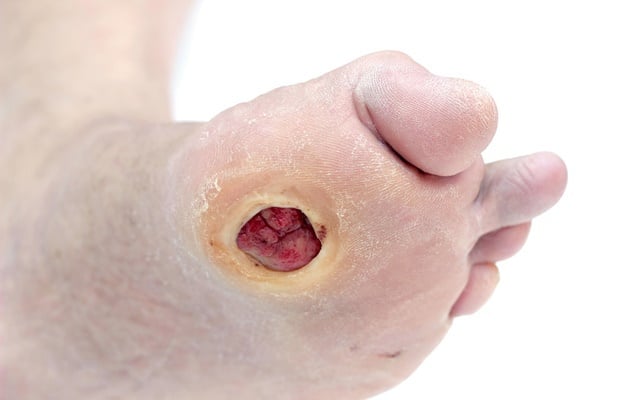
This research also states that the risk of amputation is 15 to 46 times higher in diabetics than in people who do not have diabetes.
Another study published in the South African Medical Journal states that up to 90% of all foot and lower-leg amputations are associated with diabetes. Even more devastating is that up to 70% of all patients who undergo an amputation related to diabetes will die within five years of the operation.
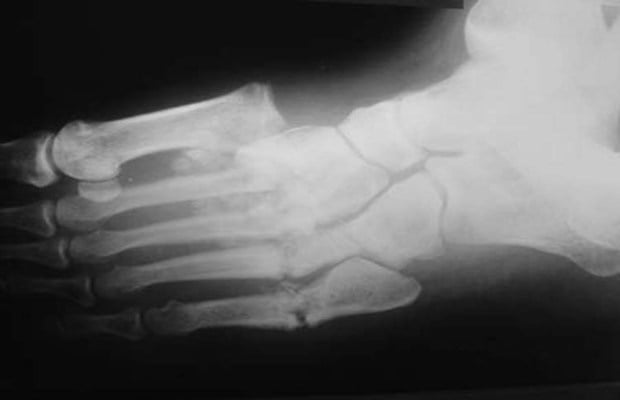
Take care of your feet
The prognosis may sound dire, but foot complications and amputation can be avoided, and the risk reduced if you have diabetes and pay proper attention to your feet. Delpierre suggests that you should do the following:
- Try and avoid minor foot injuries by wearing sturdy shoes and socks.
- Examine your feet regularly to detect minor foot ailments such as blisters, calluses and corns. These might not be serious, but can lead to infection if you don’t notice them and they are left untreated.
- Regularly wash, clean and dry your feet properly to avoid contracting fungal skin infections.
- Do not hesitate to see a podiatrist if you are worried.
- Tell your doctor about any change of sensation such as sudden numbness or tingling in your feet.
Spot the problems early
Inspect your feet to look for any of these minor foot ailments and treat them urgently to avoid infection or broken skin that can increase your risk for ulcers. You should check your feet daily for any visible injuries if the feeling in your feet is compromised.
Photos of each condition are included as a visual guide:
1. Blisters are caused by friction. Avoid blisters by wearing shoes that fit properly.
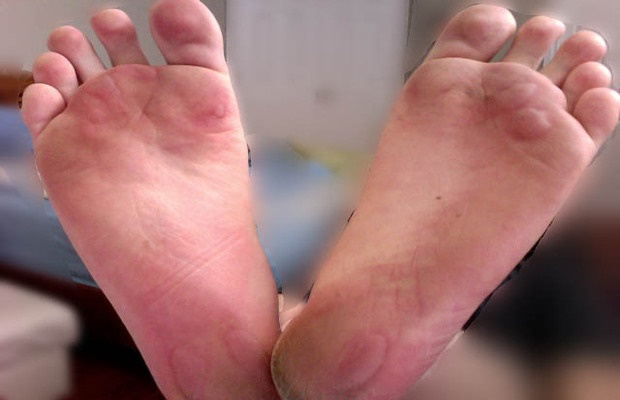
2. Corns and calluses are hardened skin, caused by pressure. Avoid corns and calluses by wearing the right size shoes to avoid pressure.
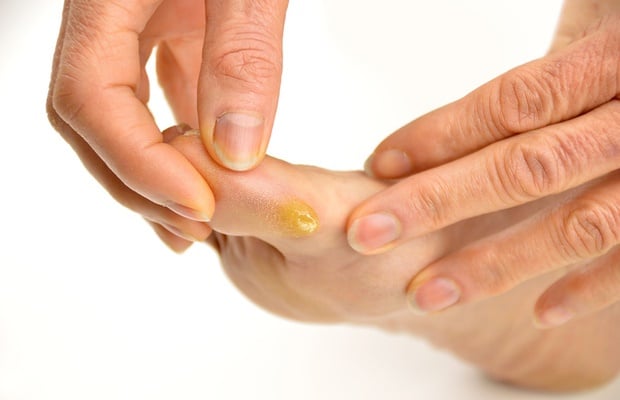
3. Plantar warts are caused by a strain of the human papillomavirus (HPV). Avoid picking up plantar warts by wearing flip-flops in shared shower areas.
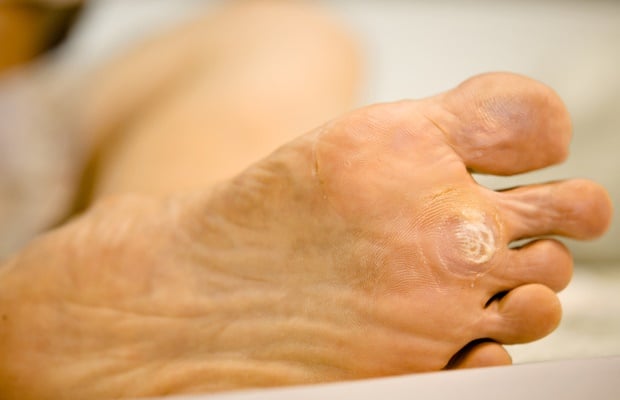
4. Minor sprains can be caused by rolling your ankles. Wear supportive shoes to help avoid injury.

5. Minor wounds such as cuts and punctures can be avoided by always wearing shoes when outside.
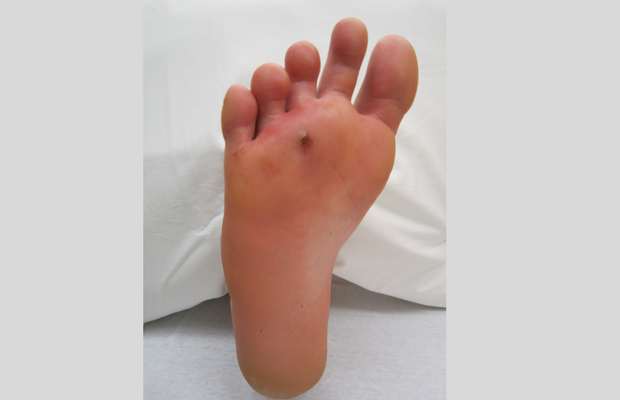
6. Ingrown toenails are caused by cutting the nail in a rounded shape instead of straight across, or wearing shoes that are too tight.
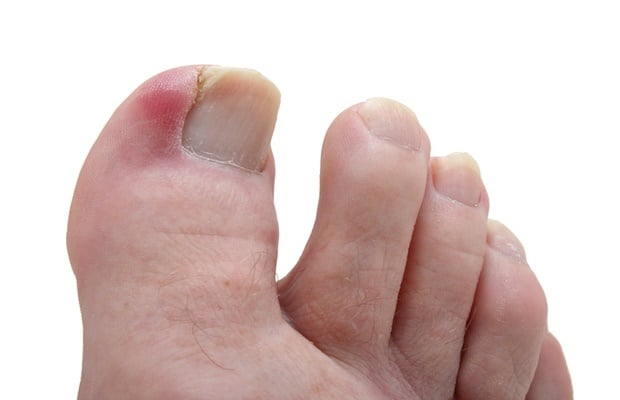
7. Fungal infections such as athlete's foot (tinea pedis) or nail fungus can be avoided by properly drying your feet, wearing clean, breathable socks and wearing flip-flops in shared showers.

For more information, do not hesitate to address any questions to Health24's diabetes expert.
Image credits: iStock and Wikimedia Commons




 Publications
Publications
 Partners
Partners












